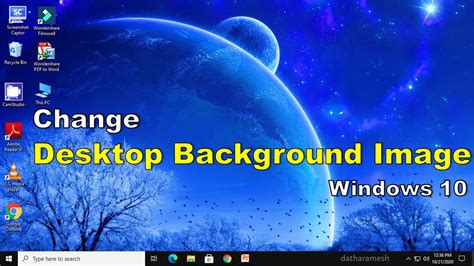How to Change Your Desktop Background: A Simple Guide
Changing your desktop background is a simple yet effective way to personalize your computer and brighten your day. A fresh background can boost your mood and make your workspace feel more inviting. This guide will walk you through the process on Windows, macOS, and Linux, ensuring you can easily customize your digital landscape.
Changing Your Desktop Background on Windows
Windows 10 and 11:
- Right-click on your desktop.
- Select "Personalize".
- Click on "Background".
- Choose your preferred option:
- Picture: Select a single image from your files.
- Solid color: Choose a plain color for a minimalist look.
- Slideshow: Create a rotating slideshow of your favorite images.
- Select your image or color. If using a slideshow, you can adjust the slideshow settings (like speed and shuffle options).
- Click "Save changes" to apply your new background.
Finding the Perfect Image:
Where can you find stunning images for your background? Many websites offer free, high-resolution images perfect for desktop wallpapers. Consider searching for "high-resolution wallpapers" or "4K wallpapers" on your favorite search engine. Remember to always respect copyright laws and only use images that are explicitly free for personal use.
Troubleshooting Windows Background Issues
- Image not appearing: Ensure the image file is not corrupted. Try a different image.
- Background not changing: Restart your computer. Sometimes a simple reboot solves minor glitches.
Changing Your Desktop Background on macOS
macOS offers a similarly straightforward process:
- Right-click on your desktop.
- Select "Change Desktop Picture...".
- Choose from Apple's pre-installed images, or select "Pictures" to browse your own image files. You can also create a slideshow using this method.
- Select your desired image or create a slideshow using the "Desktop & Screensaver" settings in System Preferences.
- Close the window to apply your changes. Your new background will be immediately visible.
Tips for macOS Desktop Backgrounds
- Use high-resolution images for the best visual quality on Retina displays.
- Experiment with different slideshow options. The built-in slideshow is a fantastic way to keep your background fresh.
Changing Your Desktop Background on Linux
The process varies slightly depending on your specific Linux distribution and desktop environment (GNOME, KDE, XFCE, etc.). However, the general approach is similar:
- Right-click on your desktop. The exact option name will vary based on your distribution. Look for something like "Set Wallpaper," "Change Background," or "Desktop Settings".
- Navigate to your image files.
- Select your preferred image.
- Apply the changes.
Note: For more detailed instructions specific to your Linux distribution, consult your distribution's documentation or search online for "[Your Linux Distribution] change desktop background".
Optimizing Your Desktop Background for Performance
While a stunning background is visually appealing, it's crucial to consider performance. Using extremely high-resolution images can impact performance, especially on older computers. Optimize your background choices for a balance between aesthetics and system efficiency.
Keywords: Change Desktop Background, Desktop Wallpaper, Customize Desktop, Windows Background, macOS Background, Linux Background, High-Resolution Wallpapers, Desktop Personalization, Computer Background
This comprehensive guide covers changing desktop backgrounds across major operating systems. Remember to choose images that reflect your personality and style while considering the performance implications of your selection. Happy customizing!
